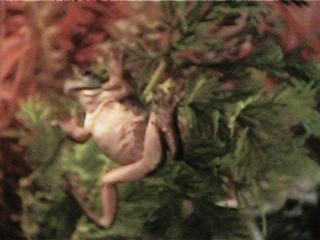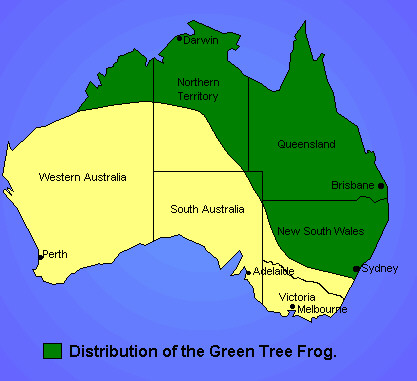
 The first illustration of the Green Tree Frog (White's). |
The White's tree frog established it's name from the first person to collect a specimen and descibe it. It was back in the late 18th century (circa 1770), when John White, a member of a scientific team led by botanist Sir Joseph Banks, first descibed this newly discovered amphibian. The team accompanied the British explorer Captain James Cook on his voyage of exploration to Australia. |
In 1790, White's work Journal of a Voyage to New South Wales was published. The journal descibed many of the curious plants and animals collected while in Australia. |
 Super Kermit |
White's are naturally found throughout the northeastern half of Australia. Ranging from central Victorian border area through most of New South Wales, all of Queensland, and across the northern half of the Northern Territory into northern Western Australia. Whites are more abundent in the wetter coastal areasin the eastern part of Australia. |  |
 | The White's are famous for the lustful appitite and fetstive plumpness. One thing to keep in mind, for a domesticated White's, is the need for exercise and a healthy diet. Offering a variety of food is a good option. While most domesticated White's are content with sticking their face in a pile of meal worms, it is a good idea to offer fiesty crickets, or an occasional moth to the tank. White's need exercise, and there is no better way than to add a moth to the tank, and watch a frog "on the prowl." |
Offering foods like pinky and fuzzy mice are a treat for large White's, but they should not be used as a regular diet. The mice tend to be high in fat, and a high fat diet for a White's could be harmful.
 |
